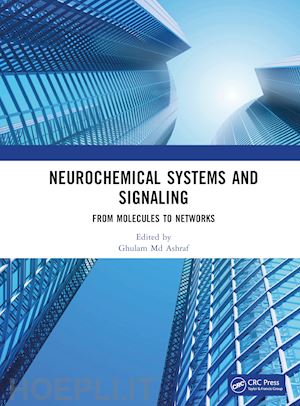The human brain is made up of billions of neurons that communicate with each other through chemical messengers, which are referred to as neuroactive substances. These neuroactive substances include neurotransmitters, neuromodulators, and neurohormones. Some neurotransmitters also act as neuromodulators and neurohormones. It is unlikely that there would ever be a consensus about the meanings of these neuroactive substances, including neurotransmitters, since the term ‘neurotransmitter’ has traditionally been used very loosely indeed, to include neurotransmitters, neurohormones, and neuromodulators. Any alterations in the functioning of these neuroactive substances can cause diseases. The brain is the ultimate center that regulates all neurological and behavioral aspects of the body through neuronal communications mediated via various neurochemicals. Thus, neurological and psychiatric disorders are, in most cases, the result of disturbed neurochemical balance. Besides the multifaceted involvement of billions of neuronal cells, the central nervous system is a complex organization with a diverse number of neurotransmitter systems, as compared to the autonomic nervous system, in which the parasympathetic system works on the ‘rest and digest’ phenomenon, and the sympathetic system works on the ‘fight or flight’ phenomenon. There are more than 20 neurotransmitter systems and multiple receptors for each neurotransmitter. Any alterations in neurochemical balance are expressed in the form of neurological or psychiatric disorders such as epilepsy, Parkinson’s disease, Alzheimer’s disease, psychosis, depression, etc. Acetylcholine, noradrenaline, dopamine, and 5-HT are of the utmost importance among neurotransmitters for their profound role in the pathogenesis of various neurological and psychiatric disorders in humans. Yet the involvement of various proteins and peptides, such as neurotrophic factors, growth factors, and endogenous chemical compounds, cannot be ignored. Day by day, the suffering of people due to an imbalance of neurotransmitters is increasing. Various factors, for example stress, diet, genetics, and toxins such as alcohol and nicotine, contribute to this imbalance. This imbalance may lead to mental health complaints. The main purpose of this book is to give a comprehensive overview of the neurological diseases associated with neurochemical imbalances. This book will help readers gain a comprehensive understanding of neuronal signaling and related neurological disorders, as well as status and future opportunities and challenges. It will provide a brief account of neurotransmission, as either a study or high-yield revision aid.











